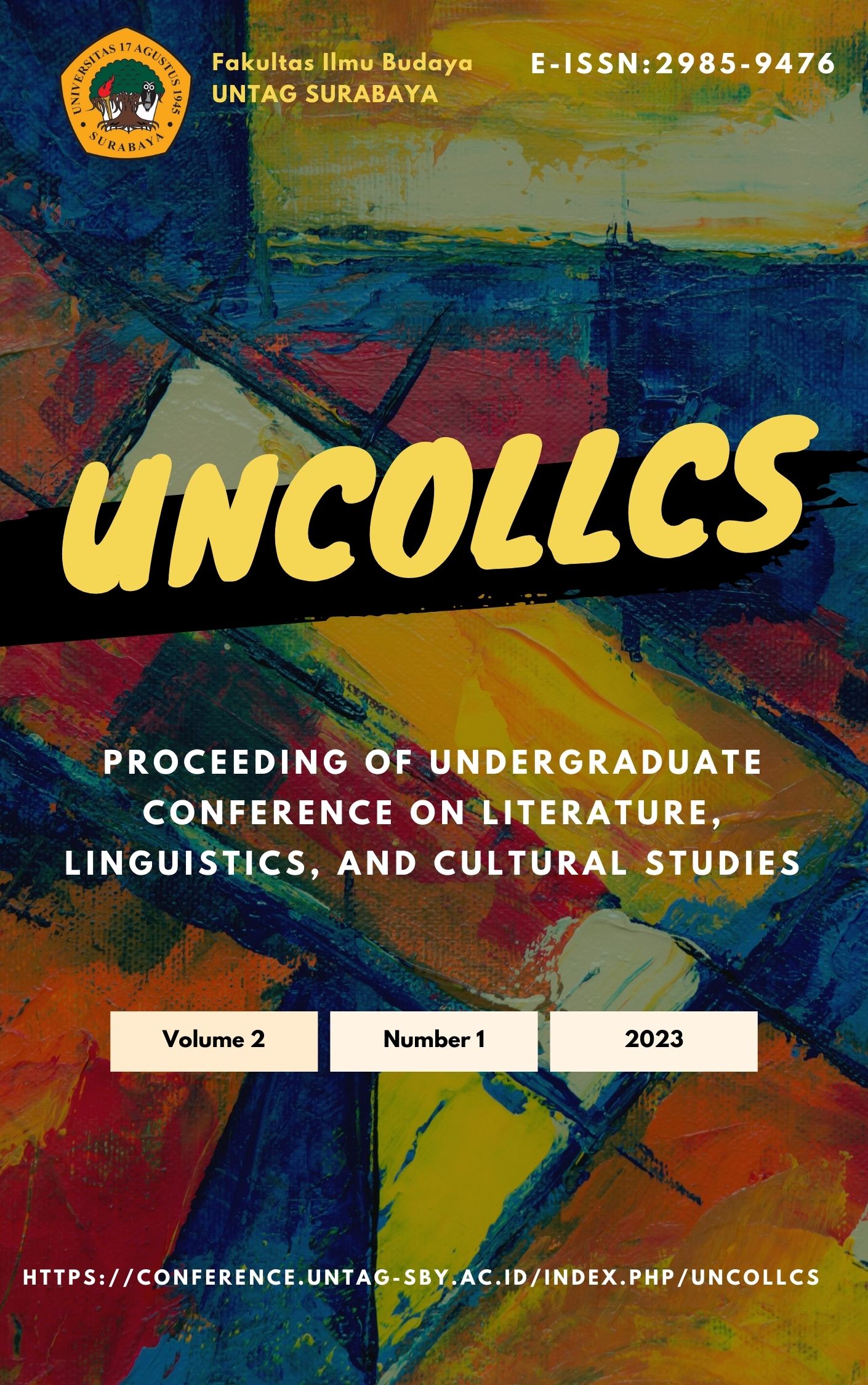Revealing Self-Assertion in Dior Fall-Winter 2022/2023 Collection Advertising Websites: A Multimodal Discourse Analysis
DOI:
https://doi.org/10.30996/uncollcs.v2i1.2545Keywords:
Self-Assertion, Fashion Website, DIOR, SF-MDAAbstract
ABSTRACT
A website can be used to determine the message that is tried to be brought by the website producers against the viewers as a professional landing page nowadays. This case applied (Djonov, 2007) theory which discussed the sections of website pages. The research also, conducted a descriptive qualitative method with the aim to reveal the concept of self-assertion depicted in verbal and visual elements of Dior Fall-Winter 2022/2023 fashion websites. The data was collected online by using the documentation technique. Then, the data was analyzed using (O’Halloran, 2008) Systemic Functional Linguistics framework. The results of the findings demonstrate that both verbal and visual elements have become such great collaboration to deliver the concept of self-assertion, in which self-assertion was portrayed as attractiveness, uniqueness, and stylish while at the same time bringing attraction to the body, particular parts of the body, and gender (Id et al., 2020). Additionally, self-assertion is not just becoming the representation of self-image, but it also represent an individual’s social class and social aspirations.
References
Cheng, F.-W. (2016). Constructing hotel brands: A multimodal analysis of luxury hotel homepages. Ibérica, 31(2006), 83–108.
Djonov, E. (2007). Website hierarchy and the interaction between content organization, webpage and navigation design: A systemic functional hypermedia discourse analysis perspective. Information Design Journal, 15(2), 144–162. https://doi.org/10.1075/idj.15.2.07djo
Enli, L. (2014). Gender Difference in Sports Advertisements and Its Teaching Implications : A Systemic Functional Multimodal Discourse Analysis ( SF-MDA ) Approach. Cross-Cultural Communication, 10(2), 62–80. https://doi.org/10.3968/4415
Finkelstein, J. (2013). The fashioned self. John Wiley & Sons. (n.d.).
Halliday, F. (2008). Chapter 3 : Foundations : Systemic Functional Multimodal Discourse Analysis ( SF-MDA ). 89–141.
Hyland, K. L., & Paltridge, B. (2011). Continuum Companion to Discourse Analysis.
Id, K. R. B., Brooks, R., Arthur, L. C., & Denson, T. F. (2020). In the context of romantic attraction , beautification can increase assertiveness in women. 1–19. https://doi.org/10.1371/journal.pone.0229162
Kress, G., & Leeuwen, T. Van. (2006). Reading Images The Grammar of Visual Design. Routledge.
Kress, G., & Leeuwen, T. Van. (2020). Reading Images; The Grammar of Visual Design. Routledge.
Li, Y., & Zhang, S. (2022). Methods in Urban and Regional Planning (1st ed. 20). Springer Nature Switzerland AG.
Maulida, L., & Harti, S. (2019). Advertisement : A Systemic Functional Multimodal Discourse Analysis ( SF-MDA ). 380(SoSHEC), 136–141.
NA Butt, Spinks, F. (2011). Using functional grammar: An explorer’s guide. Red Globe Press London.
Norris, S., & Maier, C. D. (2014). Interactions, images and texts: A reader in multimodality. In Interactions, Images and Texts: A Reader in Multimodality.
Nurmi, S. (2021). “ WILD CRAFTED , SUSTAINABLE , NORDIC BEAUTY ”:
O’Halloran, K. L. (2008). Systemic functional-multimodal discourse analysis (SF-MDA): Constructing ideational meaning using language and visual imagery. In Visual Communication (Vol. 7, Issue 4). https://doi.org/10.1177/1470357208096210
René König. (1973). A La Mode on the Social Psychological of Fashion. Applied Psychology, 34–39.
Zhang, Z., Tan, S., Wignell, P., & O’Halloran, K. (2020). Addressing international students on Australian and Chinese university webpages: A comparative study. Discourse, Context and Media, 36, 100403. https://doi.org/10.1016/j.dcm.2020.100403
Downloads
Published
How to Cite
Issue
Section
License
Copyright (c) 2023 Proceeding of Undergraduate Conference on Literature, Linguistic, and Cultural Studies

This work is licensed under a Creative Commons Attribution-NonCommercial-ShareAlike 4.0 International License.










